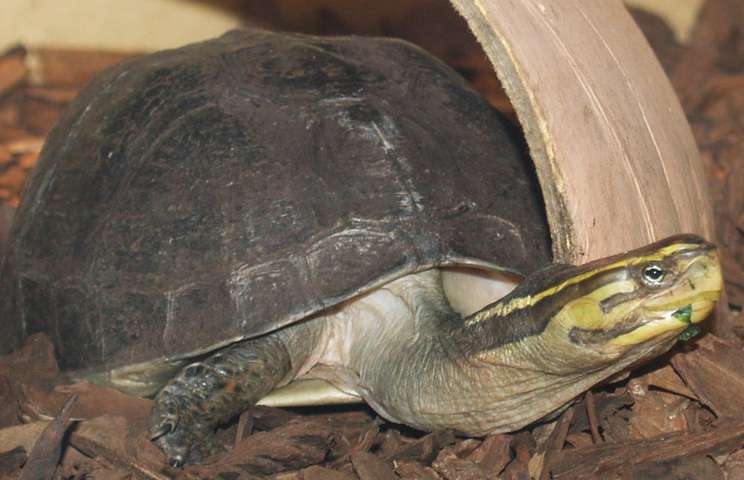
The aquatic turtle known as this pond turtle, also referred to as the Japanese stone turtle, dwells in the chilly, swift-moving waterways of Kyushu, and Honshu. In its native Japan, it is known as ishigame. In addition, they live in ponds, canals, and irrigation ditches as well as frigid streams. The answer to your question is that they don’t breathe down there. They utilize their tails to actually take oxygen from the water.
Care as a Pet

Habitat
Freshwater ponds and streams are home to wild Japanese pond turtles. They don’t mind the chilly freshwater bodies, where they are frequently seen. They have exceptional swimming abilities and can swiftly adjust to water that flows quickly.
Given that Japanese turtles spend the most of their time in the water, a sizable aquarium is required if you wish to keep one as a pet. For a single adult, the aquarium must have at least 40 gallons of water. The actual aquarium must be about 50 square feet in size. Along with other aquarium elements, the aquarium’s bottom should be covered in aquarium gravel.
Feed
The adult frogs, larvae, fish, shrimp, crabs, crayfish, aquatic insects, earthworms, algae, water weeds, and even fruit are consumed by wild Japanese pond turtles. The pond turtles consume both aquatic and terrestrial foods.
pet feeding Keeping this pond turtles is simple since they will consume anything offered to them. Wild Japanese pond turtles eat everything from adult frogs to larvae, fish, shrimp, crabs, water weeds, crayfish, earthworms, aquatic insects, algae, and even fruit.
Young Japanese pond turtles must eat daily, unlike adults, who only need to eat every other day.
Additionally, you can give them prepared turtle food. You should add natural foods like the ones listed above to their diet whenever you can.
Table





